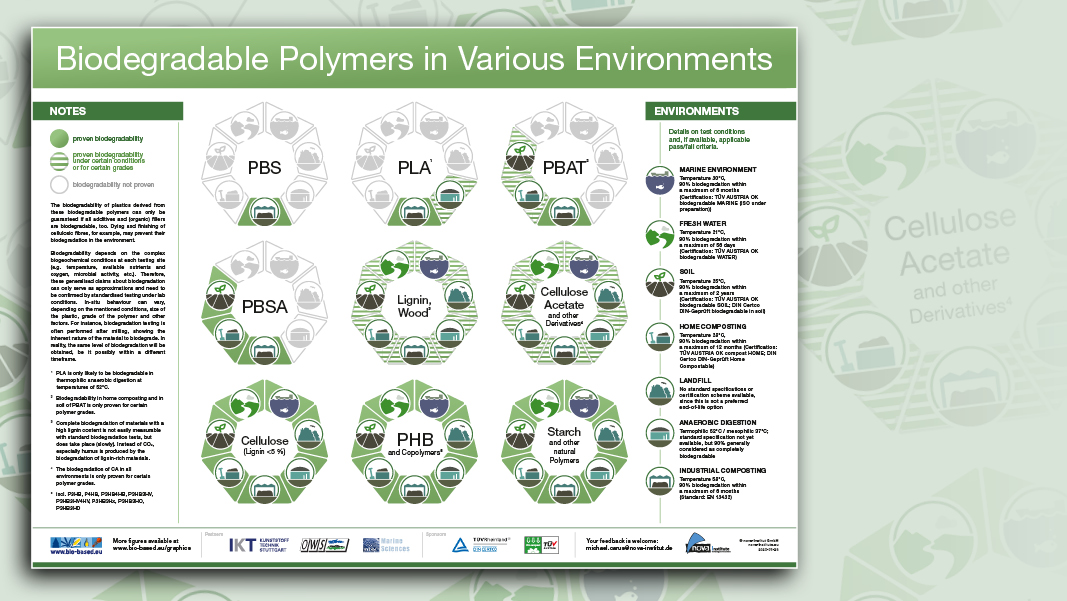The Nova Institute, along with several partners and sponsors — Kunststoff Technik Stuttgart, OWS, Inc, Marine Sciences, and TÜV Rheinland and TÜV Austria — created a poster, Biodegradable Polymers in Various Environments, which shows their fate in environments such as soil, composting and landfill. “The biodegradability of plastics derived from these biodegradable polymers can only be guaranteed if all additives and (organic) fillers are biodegradable, too,” explains text on the poster. “Biodegradability depends on the complex biogeochemical conditions at each testing site (e.g., temperature, available nutrients and oxygen, microbial activity, etc.). Therefore, these generalized claims about biodegradation can only serve as approximations and need to be confirmed by standardized testing under lab conditions. In-situ behavior can vary, depending on the mentioned conditions, size of the plastic, grade of the polymer and other factors.”
Environments shown on the poster (with their symbols) include marine, fresh water, soil, home composting, landfill, anaerobic digestion, and industrial composting. Solid green background on that symbol indicates “proven biodegradability;” green and white stripes indicates “proven biodegradability under certain conditions or for certain grades,” and a white background means “biodegradability not proven.” Three of the 9 biodegradable polymers on the poster — cellulose (lignin <5%), PHB (and copolymers), and starch and other natural polymers — have a solid green background (proven biodegradability) in all environments. PLA has proven biodegradability in industrial composting, and “is only likely to be biodegradable in thermophilic anaerobic digestion at temperatures of 52°C,” states a footnote. PBSA (Poly(butylene succinate-co-butylene adipate)) is proven biodegradable in home and industrial composting environments, and in soil.














